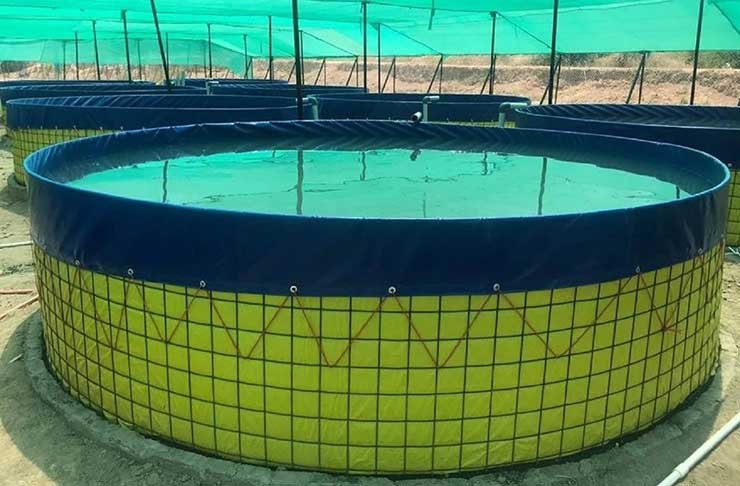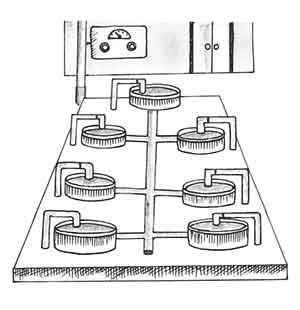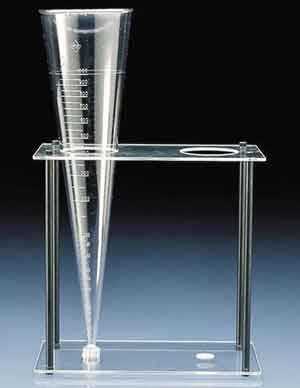Biofloc fish farming is relatively a new aquaculture system. Biofloc Technology (BFT) is considered a revolutionary eco-friendly aquaculture technology in which wastage of water and nutrients is zero or bare minimum. Popularity of biofloc culture is growing rapidly due to its lower feeding cost and higher potential of profitability per unit area.
What is Biofloc Technology (BFT)?
Biofloc system is a water treatment technology and biofloc is the combination of living and dead matters like microorganisms, bacteria, fungi, phytoplankton, algae, etc. which purify water by absorbing various inorganic wastes. In simple words, waste feeds, fish faeces and excess nutrients are recycled back into fish edible biofloc, thus purifying the water and reducing the feed cost. Biofloc culture is done in enclosed water bodies like tanks and small ponds.

Selection of Species for Biofloc Culture
The environment and water quality in a biofloc tank is not similar to that of a freshwater pond and it changes continuously. Thus species selected for biofloc culture should have some specific characteristics to tolerate the environment.
Essential Characteristics
- Direct floc consumption: As the biofloc culture is based on recycling waste into floc and re-using it as a feeding source, species which have abilities to gain nutritional value by direct consumption of floc and benefit from the extra protein are suitable for biofloc culture. This will also improve feed efficiency.
- Tolerate poor water quality: Water of a biofloc system is higher in TDS and lower in quality than freshwater ponds. Selected species must tolerate the poor quality water in biofloc culture.
Suitable Species for Biofloc Technology
| Air breathing | Singhi, Magur, Koi (Climbing Perch), Pangasius |
| Non air-breathing | Tilapia, Rohu, Common Carp, Milkfish |
| Shrimps and prawns | Pacific White Shrimp (Vennami), Tiger Shrimp/Prawn |
Among the above species freshwater shrimp/prawn, tilapia and various catfish like singhi, magur and pangasius are considered best.
Biofloc Technology Step-by-Step
1. Tank vs Pond: Where to Set Up a Biofloc System?
Both ponds and tanks are suitable for biofloc culture with different complexity levels. In earthen ponds, various natural chemical reactions and soil minerals make the already complex biofloc system more challenging. External factors like soil and rainwater make it harder to maintain the water parameters in a biofloc system.
Plastic or cured cemented tanks are best for beginners as it poses less challenge. Earthen ponds can also be used but for beginners it is best to use ponds with liners (tarpaulin or plastic geomembrane).
Rainwater is another external factor to consider especially in tropical countries like India as it influences the pH of culture water in the biofloc system. Covering the tanks with a shed would make the unit productive throughout the year and make it easier to maintain the water parameters. In a fully indoor setup the algae would not grow in sufficient quantities due to lack of sunlight and the system would depend solely on bacteria.
2. Biofloc Tank Setup

Minimum 7 tanks of 15,000 litre water holding capacity each or total 100 cubic metre of volume is considered one unit of biofloc set-up. Commercial farmers should set up at least one unit of biofloc culture.
3. Setup Aeration System
Aeration is a very important factor in a biofloc system. It has mainly two purposes- maintaining high oxygen levels of culture water and stirring the water to prevent formation of sediment at the bottom. The requirement of oxygen varies according to stocking density and the installed aeration system must fulfil the requirement without fail. There should be a standby arrangement in case of any glitch in the installed aeration system.
4. Pre-conditioning Culture Water
Pre-conditioning of the tank water is very important to develop the floc quickly and stabilise the culture water before stocking. This can be done in two ways- adding readily available commercial probiotics and preparing homemade inoculum using carbon sources like jaggery, wheat flour, tapioca flour, rice bran etc. Regular addition of the carbon source is required until the floc reaches a certain level.
5. Stocking
Suitable species for biofloc culture should be stocked after development of flocks. The seeds should not be stocked directly to the culture water after transportation. After disinfecting with potassium permanganate, the poly bags containing the seeds are put in the tank water to give the seeds time to adjust to the tank water temperature and released to the tank after a few hours.
Due to high oxygen levels and recycling of waste into floc, high stocking density can be achieved in a biofloc system. Different stocking density of 100-300 seeds per cubic metre for different species is ideal. At this stocking density, 1000-3000 fish can be cultured in a 15000 litre tank. Overstocking can lead to poor growth and high mortality.
6. Maintaining Carbon-to-Nitrogen Ratio
Feed waste and fish excrete converts into ammonia which is lethal to the fish. Ammonia peak is one of the main reasons for biofloc failure. This can be prevented in mainly two ways.
- Reducing the protein percentage in the feed but this can affect the FCR. It is also recommended to use specially formulated feeds suitable for biofloc culture which have a higher carbon-to-nitrogen ratio (15:1 to 20:1) than normal feeds (up to 10:1).
- Mixing molasses, jaggery, tapioca flour etc. carbohydrate sources regularly with culture water. These carbohydrates break down quickly and accelerate growth of heterotrophic bacteria which synthesise the ammonia and release free nitrogen.
7. Growth, Monitoring and Maintaining Biofloc Culture

Growth of biofloc depends on various factors like nutrients, carbon content, sunlight, aeration, water temperature, initial seeded bioflocs etc. It reaches its peak within a few weeks after starting culture. The growth is monitored regularly by a cone-shaped beaker (Imhoff cone) by taking samples from a certain depth and letting the floc settle down at the bottom for a few minutes.
The colour of the tank water turns green due to fast growing algae before eventually turning brown due to growth of bacteria. The demand for dissolved oxygen rises 6 times at this point and any problem in the aeration system can be fatal for the stock. So, the working condition of the aeration system and power supply must be ensured. Preventive measures like backup power supply or offgrid systems can be considered.
Regular monitoring of the various factors like water parameters, dissolved oxygen, ammonia level, FCR, growth, etc. should be done for efficient running of the farm. An efficiently run biofloc unit consumes less power and delivers better FCR by utilising the floc and maintaining the water quality persistently without exchanging it. For every kilogram of stock growth, 650-800 gm comes from the feed and the rest (200-350 gm) comes from the biofloc which reduces the feed cost significantly and increases the profit.
8. Harvesting and Yield
A drainage system is installed at the bottom of the biofloc tanks which is used to partially exchange water to maintain water quality or completely drain out the water at the time of harvesting. Harvesting is done with hand nets in tanks.
Stocking density and culture period is different for every species and hence the yield also. In case of tilapia the culture period is about 6 months and the yield per cycle is about 500-600 kg. from a 15000 litre tank with a stocking density of 100 per cubic metre.
9. Post-harvest
After harvesting every batch of crop it is very important to drain off the water completely and clean the tank. Re-using the cultured water full of readily available biofloc, though seems economical, is very risky to maintain biosecurity for the next batch. Furthermore prolonged use of the same water deteriorates its quality to a level that the stock becomes non-consumable to humans due to the presence of heavy metals.
The wastewater can be used for agricultural purposes or can be treated and recycled to re-use in biofloc culture.
Pond vs Biofloc: Which One is the Best?
Both the pond and biofloc culture system has their merits and demerits. One should choose one as per their goal, financial capacity and management style. Here are some key differences between these two systems.
| Sl. | Pond Culture | Biofloc Culture |
|---|---|---|
| 1 | The cost of pond construction is very high. | The cost of biofloc tank setup is relatively low. |
| 2 | Require high land area for pond construction. | Small areas including terrace and indoor space can be utilised profitably. |
| 3 | Suitable for rural areas only. | Suitable for urban, semi-urban and rural areas. |
| 4 | Low productivity per unit area. | High density production with higher yield per unit area. |
| 5 | Lower feed efficiency, wastage of feed. | Higher feed efficiency and requires lower feed. |
| 6 | Difficult to control water quality. | Easy to control water quality. |
| 7 | Difficult to control biosecurity. | Easy to control biosecurity. |
| 8 | Affected by natural calamities like flood and drought. | Less/not affected by natural calamities. |
| 9 | A wide variety of species can be cultured. | Suitable species for biofloc culture are limited. |
| 10 | Not always eco-friendly. | Eco-friendly culture system. |
| 11 | High water use and wastage. | Low or zero water wastage. Water can be recycled or used in crop production. |
| 12 | Does not require continuous monitoring. | Require continuous monitoring and active management. |
| 13 | Low energy consumption. | Higher energy consumption. |
A Sample Project on Biofloc Fish Farming
Here is a sample project on biofloc culture of monosex GIFT tilapia. The land selected for the project is assumed owned by the farmer, therefore no additional cost for land has been added in this project.
100 cubic metres of biofloc culture is considered one unit which can be achieved by 7 tanks of 15,000 litres each. This sample report is based on 5 units or 35 tanks of 15,000 litres each. PVC coated 700 GSM tarpaulin will be used as biofloc tanks.
Techno-Economic Parameters
| Sl. | Item | Unit | Value |
|---|---|---|---|
| 1 | No. of tanks | No. | 35 |
| 2 | Water holding capacity | Litre/tank | 15,000 |
| 3 | Water volume | m3/tank | 15 |
| 4 | Total water volume of installed tanks | m3 | 525 |
| 5 | Fingerling stocking density | No./m3 | 100 |
| 6 | Fingerling survival rate | % | 80 |
| 7 | Average fish weight at harvesting | Kg. | 0.5 |
| 8 | Rearing period | Months | 6 |
| 9 | No. of crops | No./year | 2 |
| 10 | Covered area | Sq.ft. | 10,500 |
| 11 | Store room/security shed/office | Sq.ft. | 200 |
| 12 | Manpower cum security | No. | 1 |
| 13 | Selling price of fish | Rs./kg. | 120 |
Project Cost
| Sl. | Item | Unit | Unit Rate | Quantity | Amount Rs. |
|---|---|---|---|---|---|
| 1 | Land development/ clearance | 5,000 | |||
| 2 | Electrification | 25,000 | |||
| 3 | Biofloc tank set up | Rs./tank | 30,000 | 35 | 10,50,000 |
| 4 | Shed construction over tanks | Rs./Sq.ft. | 60 | 10,500 | 6,30,000 |
| 5 | Store room/security room/office | Rs./Sq.ft. | 170 | 200 | 34,000 |
| 6 | Borewell and submersible pump set | Rs./pump set | 1,20,000 | 2 | 2,40,000 |
| 7 | Generator set (5KVA) | Rs./set | 1,60,000 | 1 | 1,60,000 |
| 8 | Air blower (2HP) and related accessories | Rs./set | 35,000 | 5 | 1,75,000 |
| 9 | Water, air pipe fittings and inlet/outlet | Rs./tank | 1,000 | 35 | 35,000 |
| 10 | Net and other tools and equipment | Rs./tank | 2,500 | 35 | 87,500 |
| 11 | Project formulation, consultancy, training, contingency, etc. | 35,000 | |||
| 12 | Working capital [see below] | 6,17,925 | |||
| Total Project Cost | 30,94,425 | ||||
Working Capital Computation
| Sl. | Item | Unit | Unit Rate | Quantity | Amount Rs. |
|---|---|---|---|---|---|
| 1 | Fish seed (fingerlings) | Rs./fish | 1.25 | 52,500 | 65,625 |
| 2 | Supplementary feed | Rs./kg. | 26 | 17,000 | 4,42,000 |
| 3 | Harvesting charges | Rs./kg. | 0.30 | 21,000 | 6,300 |
| 4 | Security | Rs./month | 9,000 | 6 | 54,000 |
| 5 | Misc. cost* | Rs./crop | 50,000 | 1 | 50,000 |
| Total Working Capital | 6,17,925 | ||||
* Misc. cost includes various overhead costs like electricity, fuel, transportation, probiotics, external carbon, test kits, etc.
The working capital is computed until the first batch of fish has been sold (first 6 months) and the farm starts generating revenue.
Profitability Statement
| Item | 1st Year | 2nd Year | 3rd Year | 4th Year | 5th Year |
|---|---|---|---|---|---|
| Revenue | |||||
| Fish | 50,40,000 | 50,40,000 | 50,40,000 | 50,40,000 | 50,40,000 |
| Total Revenue | 50,40,000 | 50,40,000 | 50,40,000 | 50,40,000 | 50,40,000 |
| Expenditure | |||||
| Fish seed (fingerlings) | 1,31,250 | 1,31,250 | 1,31,250 | 1,31,250 | 1,31,250 |
| Supplementary feed | 8,84,000 | 8,84,000 | 8,84,000 | 8,84,000 | 8,84,000 |
| Harvesting charges | 12,600 | 12,600 | 12,600 | 12,600 | 12,600 |
| Security | 1,08,000 | 1,08,000 | 1,08,000 | 1,08,000 | 1,08,000 |
| Misc. cost | 1,00,000 | 1,00,000 | 1,00,000 | 1,00,000 | 1,00,000 |
| Total Expenditure | 12,35,850 | 12,35,850 | 12,35,850 | 12,35,850 | 12,35,850 |
| Gross profit* | 44,22,075 | 38,04,150 | 38,04,150 | 38,04,150 | 38,04,150 |
Conclusion
A large number of dubious biofloc training centres are mushrooming throughout India whose sole purpose is to sell biofloc equipment, fish seeds, feeds and other materials to unsuspecting farmers by promising huge profits. Those farmers are failing later without proper knowledge and guidance. One must invest in biofloc culture only after taking training from a reputable organisation and acquiring required knowledge.
Biofloc fish farming is a profitable agribusiness only when the factors like selection of suitable species, culture knowledge, continuous monitoring and active management are fulfilled.
Thank you for this insightful article. Do you services extend out of India?
We are planning to do so but right now we do not serve foreign clients.
Hello. I am a regular person who’s interested in BFT. Thank you for your detailed sharing on Biofloc. Where can I see your actual setup? I am planning to save money and try just one circular pond and study the system before I do 1 unit of biofloc hopefully. Do you also do mentoring? Can I connect with you through email? I would like to ask on you best practices and also the biggest mistakes you’ve had. Thank you very much.